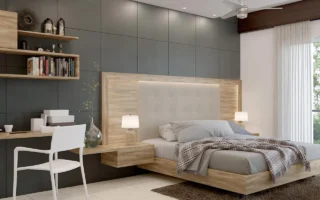Creating a sense of space in any room can enhance its ambiance and functionality. Windows plays a vital role in achieving this effect. You can transform even the coziest spaces by harnessing the power of natural light, choosing appropriate styles, and considering placement carefully. Incorporating mirrors adds an extra layer of depth, reflecting light and creating illusions of openness. The right window treatments can frame your views beautifully, allowing much-needed sunlight to flood. Other design elements, such as color palettes and furniture arrangement, also contribute to the sense of spaciousness. Considering these aspects, your home can feel more inviting and expansive.
The Power of Natural Light

The power of natural light in interior design cannot be overstated. It has a magical ability to brighten spaces and create an inviting atmosphere. When sunlight pours through windows, it reveals colors and textures that artificial lighting cannot replicate.
This influx of daylight not only enhances aesthetics but also impacts mood. Sunlight can uplift spirits, making rooms feel more alive and spacious. People often need to pay more attention to how much natural light can change their perception of a room.
Well-lit areas appear larger because shadows are minimized, creating depth. The interplay between light and shadow adds dimension, encouraging movement within the space. To maximize this effect, use sheer curtains or no window treatments. Allowing unobstructed views will bring the outdoors in while amplifying that open feeling we crave in our homes.
Choosing the Right Window Style

When it comes to making a room feel larger, the style of your windows plays a crucial role. Different shapes and designs can dramatically alter perception. Floor-to-ceiling windows are a great option. They invite natural light while connecting indoor and outdoor spaces seamlessly. This openness fosters an airy ambiance.
Casement or sliding windows can also enhance views without bulky frames obstructing sightlines. Their sleek profiles allow maximum sunlight to flood in, enhancing the illusion of depth. Arched or rounded windows add elegance and can create focal points that draw the eye upward, which helps generate a sense of height in any space. Lighter window frames reflect light more effectively than darker shades, contributing to your desired spacious feeling. Mixing styles thoughtfully will elevate aesthetics and transform your perception of your living area.
Placement and Size of Windows

The placement and size of windows are crucial in shaping a room’s perception. Large windows can flood a space with light, enhancing the feeling of openness. Positioning them strategically on walls that face outdoor views will draw the eye outward, creating an expansive effect. Think about how the natural scenery outside can extend your living area.
Smaller windows can also work wonders when placed higher up on walls. This allows for privacy while still letting in sunlight, making ceilings feel taller. Consider using multiple smaller windows instead of one large pane in open spaces. This approach adds architectural interest and helps maintain balance within the room’s design.
Mirrors: A Simple Trick to Create the Illusion of Space
Mirrors can work wonders in a room. They reflect light and create depth, making even the coziest spaces feel airier. Positioning mirrors strategically can draw the eye across a room. A large mirror on one wall can double the perceived size of your space. It tricks the mind, leading you to believe there’s more than what meets the eye.
Place a mirror opposite a window. This setup captures natural light and bounces it around, brightening up darker corners. It creates a lively atmosphere with an open feel. Group mirrors for added visual interest, or choose unique shapes to add character without overwhelming your decor. The key is to let reflections enhance your design rather than dominate it, achieving that perfect balance between style and spatial illusion.
Utilizing Window Treatments

Window treatments play a crucial role in enhancing how spacious a room feels. Opting for sheer or light-filtering fabrics allows natural light to flow freely while maintaining privacy, creating an airy atmosphere. Floor-to-ceiling curtains draw the eye upward, giving the illusion of taller ceilings. When they are pulled back, windows appear larger, letting in more light.
Avoid heavy drapes that can weigh down a space. Instead, use lighter colors and simple designs to keep things open and inviting. Blinds offer another option; choose ones that can be completely lifted away when unused. This maximizes your view outside and connects the interior with nature.
Other Design Elements to Consider
Consider the color palette to enhance the perception of space in a room. Light colors on walls and ceilings can make a significant difference. Soft whites, pastels, or light grays reflect more light, creating an airy feel.
Another strategy is to incorporate streamlined furniture. Opt for pieces with slender legs or transparent materials like glass and acrylic. This helps maintain an open visual flow. Textures also play a role. A mix of smooth finishes with soft textiles creates depth without overwhelming the senses. Think plush cushions paired with sleek tables. Large-scale art hung at eye level can draw attention upward, making ceilings appear taller while adding character to your space without cluttering it up too much.




